All issues

Volume 30, Issue 10
Displaying 1-9 of 9 articles from this issue
- |<
- <
- 1
- >
- >|
-
Ichiro KAWAKATSU1980Volume 30Issue 10 Pages 535-536
Published: October 30, 1980
Released on J-STAGE: July 23, 2008
JOURNAL FREE ACCESSDownload PDF (366K) -
Shigeo MUROMACHI, Hiroshi ANADA, Shizuo TADA, Mitsugu TOKIZAWA1980Volume 30Issue 10 Pages 537-544
Published: October 30, 1980
Released on J-STAGE: July 23, 2008
JOURNAL FREE ACCESS6063 DC billets having complete feathery crystals are expected reducing the deformation resistance. Practical casting tests were made to produce such billets using an improved mold, float and water pool. The optimum casting variables to ensure the DC billets 152mm in diameter having complete feathery crystals are; casting rate 115mm/min, casting temperature 730°C and cooling water 120l/min.View full abstractDownload PDF (2250K) -
Shigeo MUROMACHI, Shizuo TADA, Mitsugu TOKIZAWA, Hiroshi ANADA1980Volume 30Issue 10 Pages 545-550
Published: October 30, 1980
Released on J-STAGE: July 23, 2008
JOURNAL FREE ACCESSThe extrusion energy required for solid shape extrusion calculated from average pressure and the extrusion time are reduced in accordance with increase in the area ratio of feathery crystals in the cross section of a billet. Complete feathery crystal billets requires the extrusion time shortened by about 25 to 35% from that usual granular crystal billets do when extruded at 390°C, 0.45m/min and at extrusion ratio 49. Such a fact is not so significant in hollow shape extruding. The extrudability of the complete feathery billets considerably depend on the extruding direction. Extruding in the growth direction ensures further extrudability than extruding in the casting direction regardless of the extruding condition and products shape.View full abstractDownload PDF (1276K) -
Kenji HIGASHI, Tadakazu OHNISHI, Yoshizo NAKATANI, Kunio OKABAYASHI1980Volume 30Issue 10 Pages 551-559
Published: October 30, 1980
Released on J-STAGE: July 23, 2008
JOURNAL FREE ACCESSWhen hydrogen is charged to the Al-8%Mg alloy, a large amount of hydrogen is penetrated only in the age-hardened state, but a small amount is penetrated in the under and over-aged states. The maximum penetration state is nearly agrees with the maximum hardened state. This is attributed to the correspondence of hydrogen penetration to distribution of precipitates owing to preferred penetration into grain boundaries and interfaces of precipitates. The alloy hydrogen-penetrated is embrittled and further susceptible to intergranular cracking. The alloy slightly under-aged is the most embrittled. This is attributed to the predominant relation to grain boundary precipitation. Hydrogen enhances intergranular cracking by facilitating formation of microvoids and cracks at grain boundaries and interfaces of precipitates.View full abstractDownload PDF (2426K) -
Kenji HIGASHI, Tadakazu OHNISHI, Yoshizo NAKATANI, Kunio OKABAYASHI1980Volume 30Issue 10 Pages 560-567
Published: October 30, 1980
Released on J-STAGE: July 23, 2008
JOURNAL FREE ACCESSThe susceptibility of the Al-8%Mg alloy to stress corrosion cracking changes with an aging state and reaches to its maximum at the state in which precipitates are distributed the most densely at grain boundaries. Hydrogen penetration reaches to its maximum at the maximum aging state. Hydrogen has the most remarkable effect on stress corrosion cracking at the slightly under-aged state of maximum susceptibility. The fracture of stress corrosion cracking is of an intergranular mode. The smoothed facet of intergranular cracking may be produced by mechanical fracture, because plastic deformation marks and precipitates remain on the facet. Stress corrosion cracks are generated by mechanochemical corrosion and propagated by a combined action of corrosion and hydrogen embrittlement.View full abstractDownload PDF (2103K) -
Yoshihiro IHARA, Tetsuo ADACHI, Shiro MATSUOKA, Mamoru SAYASHI, Shigeo ...1980Volume 30Issue 10 Pages 568-573
Published: October 30, 1980
Released on J-STAGE: July 23, 2008
JOURNAL FREE ACCESSSome factors which may cause delaying homogenization time in feather crystals than that in columnar crystals of Al-4.5%Cu alloys were discussed. The diffusion rate of Cu atoms in aluminum is independent of diflusion direction, grain boundary area, twin-plane and dislocation density in the diffusion experiment using aluminum/eutectic diffusion couples. The difference between homogenization rates in columnar and feather crystals is attributed to the difference in distribution of the second phase in the feather and columnar crystals.View full abstractDownload PDF (941K) -
Masahiro TAKESHIMA, Junichi KANEKO, Makoto SUGAMATA, Ken-ichiro AOKI1980Volume 30Issue 10 Pages 574-579
Published: October 30, 1980
Released on J-STAGE: July 23, 2008
JOURNAL FREE ACCESSDeep drawability, Baring ratio, tensile properties, textures and hardness change by deep drawing were examined for 2036 aluminum alloy specimens age-hardened under various conditions. Specimens aged at temperatures below 160°C show higher limiting drawing ratio (LDR) than those as quenched or fully annealed, whereas those aged above 180°C show lower LDR. LDR of age-hardened materials is shown to be correlated to total elongation and n value, but not to tensile strength and r value. Earing in age-hardened specimens is nearly same as in the fully annealed or as quenched ones. The obtained LDR values were compared with ones previously reported for 6061 and 7N01 alloys. 2036 and 7N01 alloys show the highest and lowest LDR, respectively when compared at the same tensile strength, total elongation, r and n values. LDR of age-hardened specimens of these three alloys are shown to be correlated to rmin value, and inversely correlated to the intensity of (200) diffraction parallel to the sheet.View full abstractDownload PDF (837K) -
Nozomu KAWAI, Toshihiko MORI1980Volume 30Issue 10 Pages 580-591
Published: October 30, 1980
Released on J-STAGE: July 23, 2008
JOURNAL FREE ACCESSDownload PDF (1666K) -
Toshiteru UCHIYAMA, Eizo ISOYAMA, Tatsuo OTSUKA1980Volume 30Issue 10 Pages 592-605
Published: October 30, 1980
Released on J-STAGE: July 23, 2008
JOURNAL FREE ACCESSDownload PDF (2324K)
- |<
- <
- 1
- >
- >|